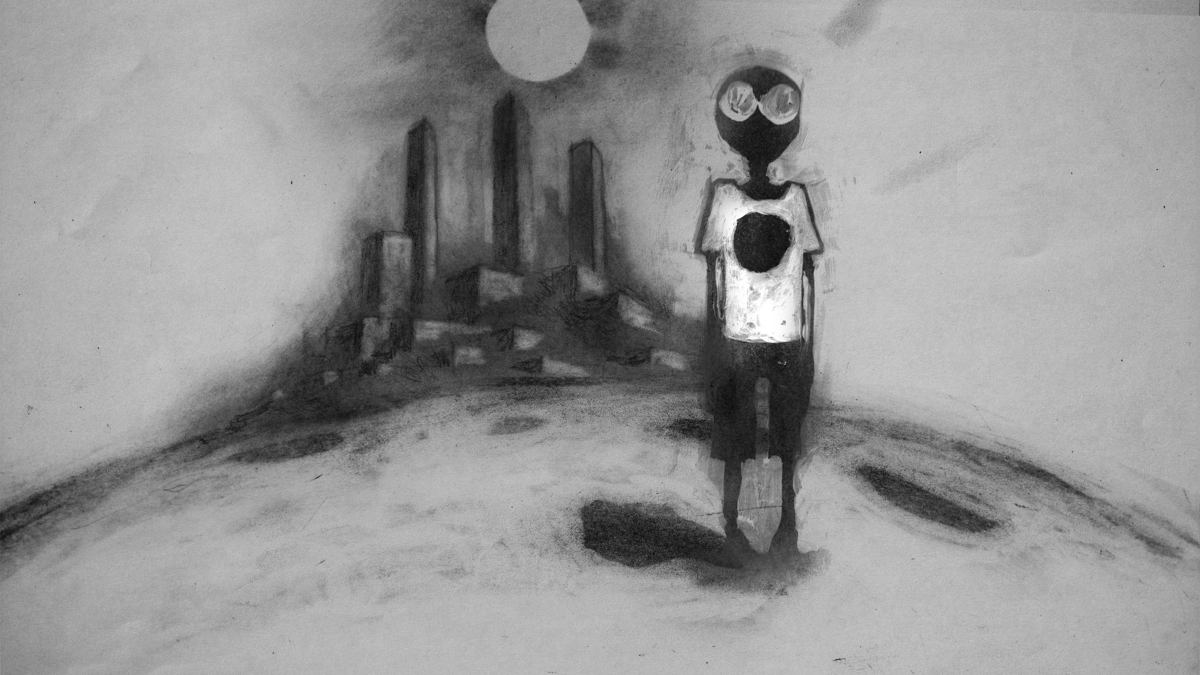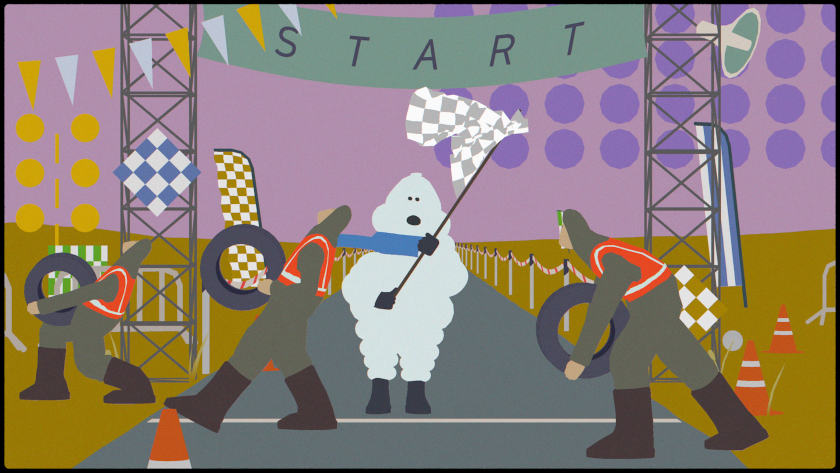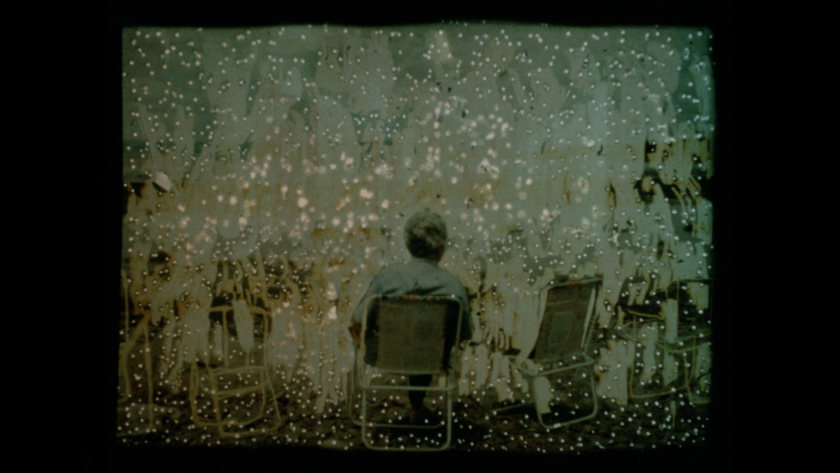Creating Your Own Boundaries: Interview with Veljko Popović

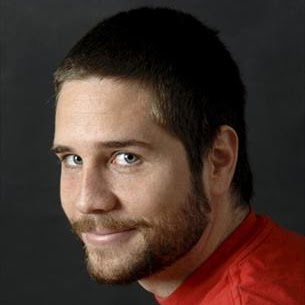 The original interview with Croatian independent animation artist Veljko Popović was recorded during the 2016 Annecy festival, where his latest 3D film, Planemo, screened in competition, after its Utrecht premiere..
The original interview with Croatian independent animation artist Veljko Popović was recorded during the 2016 Annecy festival, where his latest 3D film, Planemo, screened in competition, after its Utrecht premiere..
Since that time, this graphically seductive short got many awards (Banjaluka fest, Canal+ award) including a special mention at Animateka festival.
Popović started in 2004 to create both short artistic (She Who Measures, My Way, Dove Sei, Amor Mio) and commissioned films.
Planemo is a solitary wanderer, a sentinel of the galaxy. It is an orphaned world, a celestial body booted from its solar system by the chaos of planetary migration.
Yes and no. Planemo is a story about the human condition told (like many of Popović's films) with extraordinary comtemporaneity, technical prowess, and a strong portion of poignancy -no political undertones, but you can definitely sense the Balkan trauma underneath.
Veljko Popović sat for a portrait to Zippy Frames.
ZF: Are you happy to be here?
VP: Yes, Annecy is the place to be. If you make it to Annecy and Animafest Zagreb those two festivals, then you're set. If there is something I don't like about Annecy, it's all the invitations that you need to have (invitation for this, invitation for that). But that's the cost of a big festival.
ZF: How long did it take you to make Planemo?
VP: I'd say that the production lasted two years, from the time we got the funding. But script, pre-production is a time that no one really counts in. I was writing and developing the script for a long time...
ZF: Did your idea start with a train crash?
VP: Not actually. It started with my previous film, Dove Sei, Amor Mio. In this film I was exploring a person who's stuck in one routine; even though you have the old woman whose husband has died, she's still stuck in that routine, in that memory of their life before the death. I wanted to explore this idea further, to do another film about the power of the routine, and how people get lost in their daily lives, fragmented in a sense.
The train crash happened at this time, and somehow it go connected. It was the biggest train disaster in Croatian history. 4 people lost their lives, and a lot of other people got injured - it has never been fully resolved, we never learnt who's to blame.
There was a friend of mine in that train, visiting his daughter in Split..He was one of the persons who lost their life. He was living in the forest in Bled, Slovenia. And the one time he got back to civilization he ends in this tragic way.
ZF: I was impressed by its aesthetic, the contrast between gray interiors and the deer symbol, like an early 3D effort.
VP: When I start with the creative process, I create boundaries for myself. For this film, we didn't use any textures at all. Everything is colored by lights and shading. We also used orthographic camera, which doesn't have any perspective; it's a difficult notion to grasp, but if you have a building which is a kilometer away and a building which is in front of you, they are the same size. Aside from this, I wanted to make the film in black-and-white with these little traces of color to differentiate between states of mind.
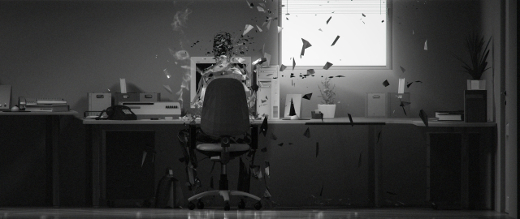
ZF: You have a very geometric universe in your films, with triangles, cubes etc., aligned shape.
VP: At first, when you do 3D, you want to hide those polygons, you want the image to look as organic as possible. At one point, I told myself: let's use the polygons and the triangles and incorporate them in the visual aesthetics of the film.
ZF: Where did you get the footage for the live-action segment in Planemo?
VP: We recorded this in our studio, we just improvised a small recording booth. Luckily, I found two guest professors from my Academy, who are native English speakers and who had this "scientist" look to them, so it all fell in place nicely; we wanted to make the documentary parts as "real" as possible.
ZF: So, there's no Planemos in the outer world.
VP: There are, actually. The facts are taken from a NASA material I found. With the use of these planemos i wanted to bridge the gap between the personal and the universal. I think it's really important to have a personal story but which also applies universally.
ZF: Did you have any influences for this film?
VP: Visually, I was very impressed by Gobelins animation openers at Annecy in 2008 and 2009, which had a stunning visual graphic. I kept this in mind. I also love how The Pearce Sisters (Luis Cook, 2008) created a kind of 3D film which didn't have a 3D feel to it. I didn't want a dry 3D look.
ZF: This was also the case of Dove Sei, Amor mio, whose characters are voluminous but there is a certain texture to appeal.
VP: In that film we used wood grain textures. I had this idea of a phoenix, something new out of the ashes of the old. For me, this idea of burning wood represents this destruction, so I used a lot of wood grain textures burning to support this idea.
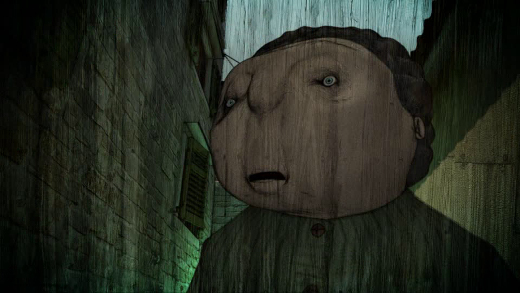
Dove Sei, Amor Mio
For my first film, She Who Measures, I used cardboard textures ; this worked well with the idea of consumerism, where everything comes boxed in. This is one of the reasons why in Planemo I said no textures at all; I've used them too much in my films [he laughs].
ZF: What about the music in Dove sei, amor mio? Where did you find the song?
VP: We wrote the song and recorded it. We used the title of the song for the title of the film as well. Which helped us when we were wandering what the film title would be. The title is Italian, but the lyrics actually are gibberish. Words drawn together -a happy coincidence.
ZF: When did you start your own company, Lemonade3D?
VP: Around 2004, but unofficially, it existed long before (founded by a friend, me and my brother). Until Planemo we didn't have the courage to think we could produce our films; we are artists, not producers. But at one point I figured we were already doing this, because 90% of our films were done in-house.
So, Planemo, was produced by Lemonade3d in co-production with Zagreb 3D2DAnimatori studio, who helped us secure more funding from Zagreb.
ZF: And distributed by Bonobostudio.
I think Vanja (Andrijević) does a wonderful job in distribution. She is present and understands films, she knows how to distribute them. If I ever had any doubt how to distribute the film, I'd go to her.
ZF: What is the contemporary situation in Croatia in terms of animation?
VP: I think HAVC audiovisual center and the support it gives to independent animation has really created a very positive atmosphere -at least, that's my perception Some would argue that the current model of funding favors the veterans with a proven track record.
I think that successful production houses should take more chances at inviting newcomers; if a big production house stands behind a project, the project will definitely get money, so you'll not have the problem with first time directors trying to make films and getting no funds. If you look at the Croatian animation in the last 8-10 years, then there's really been a big leap in film quality.
ZF: So, is it a matter of funding or talent?
VP: In Croatia, we don't have a big industry: you are either funded by the State, or you have to find (and fund) another work. We don't have big studios and projects to work upon, and in our spare time we do some work of our own. There's no real industry in a sense, which is really a shame.
ZF: But still the perception of Croatian animation is highly regarded, taking into account the rich tradition (Zagreb School).
VP: Croatian animation has been getting great results. When you look at how we are perceived internationally, and how many films enter in A-list festivals, then you see that Croatian animation is very successful.
ZF: How did the story with the multi-directed Father came up?
VP: It was actually a funny thing, because I was pitching at the time Dove Sei, Amor Mio at ITFS Stuttgart for Robert Bosch foundation, and it turned out that the artists from Father were also pitching for the same foundation.
They won, I lost [he laughs], and so I told them: do you want to collaborate? Vanja (Bonobostudio), very good at international co-productions (who also produced Dove Sei, Amor Mio) got involved in the project, and that's how it started. Aside from the Bulgarians who created the original project, a German production house joined in as well. The German side was also involved (part of the whole process), and this is how the team was formed.
We won the Robert Bosch co-production prize and got funding from Croatia and Bulgaria to do the film.
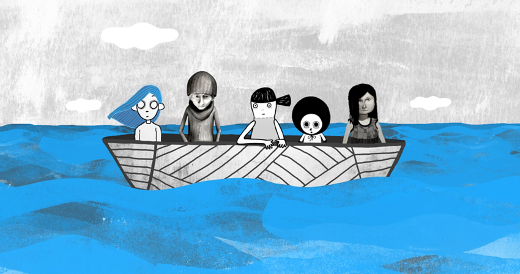
Father
Everything used his/her own style, but at the same time we wanted to have an integrated story. It was a complex project, but Phil Mulloy oversaw the whole film, and kept it on track -even our (small) arguments ended up with drinks afterwards. I liked the process and the challenge: animated documentaries is not something I'd really do as part of my personal work.
ZF: What would you do as part of your personal work?
VP:We already received funds to produce a film based on the artwork of a very famous Croatian artist, Vasco Lipovac; his work has a great potential to be made into a film. It will be a shorter project (around 4 min), and a production schedule of one year or less.
ZF: How do you spend and share your time between short films and commissioned projects?
VP: I enjoy both. When you're doing your own stuff, it's more intensive and you question everything you do. When you have a project from a client, you really have all of it laid out (and it is less demanding in terms of investing your personal self). In animation, I want to be graphical and experimental, in commission works you have to be more polished and mainstream.
ZF: What do you think about mainstream, US big studio animation (Disney, Pixar, Dreamworks etc.), and this talk about 2D animation being dead?
VP: I've watched the entire short film competition at Annecy and I only saw 3 or 4 films in 3D. The rest are 2D animation, collage, puppets or something else. These things come and go; it's really wrong to try and define yourself by what approach you use. We should all be filmmakers, and use whatever tools you like to use.
ZF: What tools did you get from your academic studies?
VP: I graduated as a painter from the Zagreb Academy of Fine Arts. There was the option of doing animation, but I never initially wanted to be an animator. I wanted to create an art movement with selected friends in Croatia, while at the same time I hated the idea of working so long on something, only to show it at your local gallery and that's it.
It just happened to be that Simon Bogojević Narath, one of the great animation directors in Croatia, was working in my hometown (Split) as a professor. I applied as his assistant, got the job and in our time together I came up with the idea for She Who Measures.
ZF: But you don't work just by yourself, right?
VP: I've been fortunate to work with my brother, Milivoj Popović, being together for 14 years now. Most of my associates are friends who come from my hometown. I had the foresight to connect with people who have the same aesthetics and values as I do. When our first film came out and got awards, we got lucky and people wanted to work with us.
ZF: Would you ever think of trying your hands on a feature film?
VP: If you asked me this question two years ago, I would say "Never". But now I think I could try it, if I could go on with my own terms.
ZF: What are your terms?
VP: I'd like to avoid the middlemen, someone who is between you and the creative process and the producer as well. I really like the idea of short films, where you have a really direct relationship with everybody in the team. But, perhaps with 8 years of success in the short films, someone would come to believe in me enough to invite me and get involved.
I think we do have the potential; we do the artistic work in parallel with our commercial work for 10 years now, and it would be a good idea to bridge this gap between the artistic and the commercial. But it would have to be something in which, at the end of the process, I could say "This is my film".


